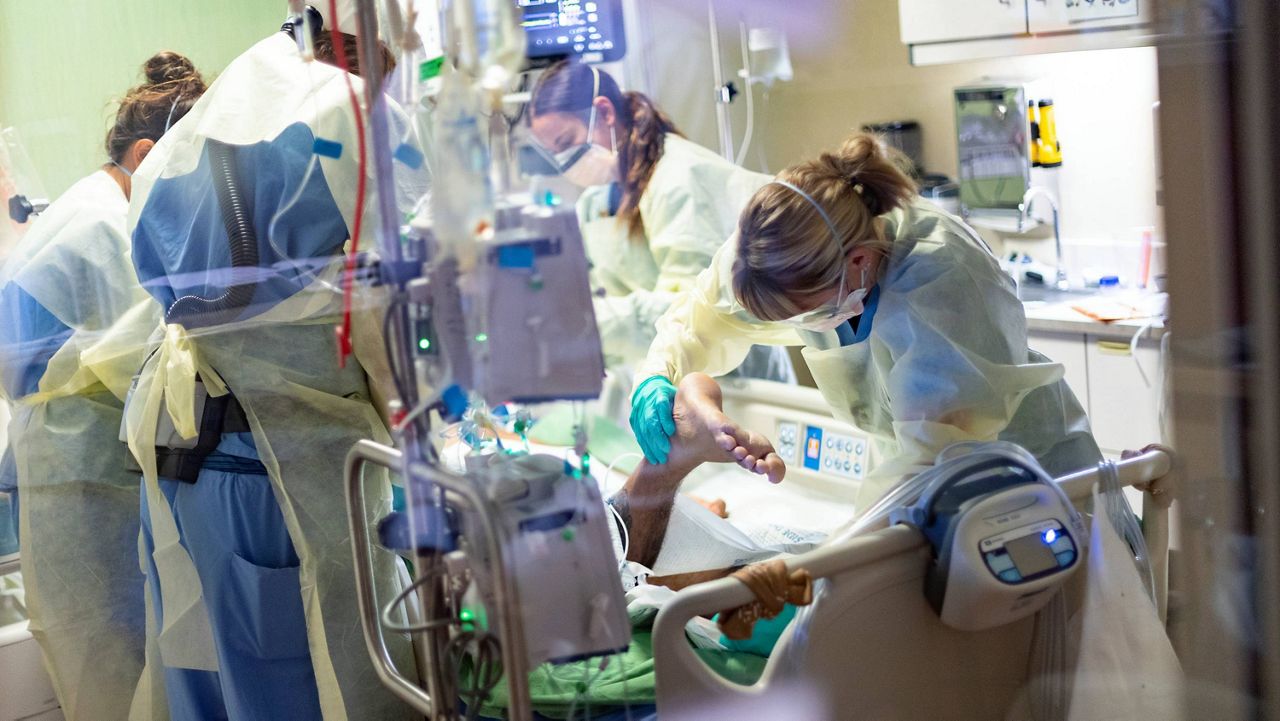More people are currently hospitalized in the U.S. with COVID-19 than at any other point of the pandemic, according to data from the Department of Health and Human Services.
What You Need To Know
- COVID-19 hospitalizations have hit a record high of 145,982 amid a whopping surge of cases fueled by the omicron variant, according to data from the Department of Health and Human Services
- That number is about double what it was two weeks ago and surpasses the previous record of 142,273 set on Jan. 14, 2021
- with coronavirus infections still climbing, it’s likely hospitalizations will go even higher — possibly much higher — and add further stress to the U.S. health care system
- While studies show the omicron variant tends to be milder than previous strains of the coronavirus, the rising hospitalization numbers reflect the sheer volume of infections and also serve as a reminder that omicron is still capable of causing severe illness
HHS said Tuesday that COVID-19 hospitalizations have hit a record high of 145,982 amid a whopping surge of cases fueled by the omicron variant. That number is about double what it was two weeks ago and surpasses the previous record of 142,273 set on Jan. 14, 2021.
And with coronavirus infections still climbing, it’s likely hospitalizations will go even higher — possibly much higher — and add further stress to the U.S. health care system. For example, modeling by the Institute for Health Metrics and Evaluation at the University of Washington projects more than 272,000 hospital beds will be needed for COVID-19 patients before the end of the month.
According to the Centers for Disease Control and Prevention, the latest seven-day average for new daily infections is a 674,406 — about 2.7 times higher than last winter’s peak of 250,431. The seven-day average for deaths is 1,552, up 42% over the past two weeks and the highest rate since Oct. 10.
Nearly 24,000 of people hospitalized with COVID-19 are in intensive care units, accounting for 31% of those occupying ICU beds, HHS said. About 78% of all hospital beds nationwide are filled, 21% will COVID patients.
The hospitalized include nearly 5,000 children with confirmed or suspected COVID-19, nearly double September’s delta variant peak.
Colorado, Louisiana, Maryland, Oregon and Virginia have declared public health emergencies or authorized crisis standards of care, which allow hospitals and ambulances to decide whom receives urgent, life-saving care when demand cannot be met.
Adding to the concerns is that highly contagious omicron variant is infecting health care workers, thinning hospital staffs.
As has been the practice throughout the pandemic, the HHS data includes people who are hospitalized for COVID-19 as well as others who are primarily being treated for another medical issue but tested positive while being admitted.
New Jersey, New York, Ohio and Delaware are seeing the highest per-capita COVID-19 hospitalization rates, while Louisiana, Florida, Washington, D.C., and Hawaii have seen the biggest spikes over the past two weeks, according to data from The New York Times.
While studies show the omicron variant tends to be milder than previous strains of the coronavirus, the rising hospitalization numbers reflect the sheer volume of infections and also serve as a reminder that omicron is still capable of causing severe illness.
While vaccines are less effective against omicron, the variant appears to be taking a bigger toll on the unvaccinated. Data from the Health Department in New York City, among the earliest U.S. cities to be hit hard by the variant, shows that seven times more unvaccinated people were infected by COVID-19 than vaccinated, and 12.5 times more unvaccinated people were hospitalized with the virus than vaccinated in late December. As cases and hospitalizations have spiked among the unvaccinated, there have been more modest increases among the vaccinated.
The CDC said Tuesday omicron accounted for about 98% of new COVID-19 infections in the U.S. last week.



